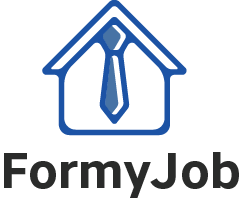Let’s start with the basics. Blockchain or a chain of blocks is a ledger shared by all users. In other words, it is a database distributed among several participants (the nodes) that record blocks of encrypted information. Therefore, it is a ledger that contains all the transactions.
How Blockchain works
Each block is completed with the transactions that have been carried out in a period (approximately 10 minutes). The nodes are connected in a decentralized network, all of them validate each block. By requiring this joint verification, it is practically impossible to make changes or manipulate the data. In addition, this distribution makes it a very resistant system against manipulations or any attack. The blocks that are created are connected with the previous ones until reaching the genesis block. This is how this network fabric is achieved.
Bitcoin … and much more
There are many blockchains, but it is usually associated with bitcoin. This cryptocurrency created in 2009 was the first Blockchain, and its success has been relentless. It is a very efficient and safe electronic currency that provides excellent ease of exchange.
Bitcoin with Blockchain
But beyond bitcoin, the Blockchain is consolidating for many more functionalities:
Financial sector: where it is most established. Some banks are already using it as a safe and effective method.
Cloud storage: with the decentralized structure of the Blockchain.
Registration of property and patents: a fast system that reduces the margin of error.
Electronic voting: many consider it a way to achieve transparent governments and avoid corruption, for example, in voting.Blockchain technology on Microsoft Azure
Microsoft incorporates the chain of blocks to the solutions for companies. This system fits the security, performance, and operational process requirements that businesses demand. The Blockchain in Azure allows a new collaborative model, with all the security guarantees, that connects companies, customers, and competitors.
If you had “a blockchain” between your fingers, what would it be, or what would it look like? A computer? A set of legos? A safe? A super-advanced device with alien symbols? Well … the truth is a bit more tedious.
It would be a pile of folders, surely. Folders were full of sheets filled with “0s” and “1s”, like some secret FBI code. This language is called “binary,” It is the only one that computers know (before translating it for us into pictures and letters). When we decipher it with any crappy tool on Google, it must be recognized that the message may not be exciting – in most blockchains – it is simply a detailed record of hundreds, thousands, millions of transactions. But of course, all this comes in digital because having a giant pile of folders is neither very practical nor very safe.
We can thus say that a blockchain (in Spanish, chain of blocks) is a digital account book about what happens in a value exchange network. It is built with advanced mathematics and can be public or private.
As a didactic analogy, we can say that a blockchain (chain of blocks) is like the big book where every transaction with a particular cryptocurrency is recorded, including exact amounts and dates. However, those transactions can also represent other things within the chain and validate their authenticity: documents, smart contracts, or messages of almost any type.
bitcoin-golden-book
The ink that this book is written with is called cryptography, so all the messages are encrypted to ensure their authenticity and protect the data from prying eyes.
Advertising
Uphold logo ZERO trading commission!
Join over two million users and experience a new kind of financial freedom.
Send money to your friends and family worldwide, instantly, for free, and in the currency of your choice, from Bitcoin to USD. Withdraw funds to bank accounts in 36 countries or crypto wallets instantly and without commissions.
Trade crypto, metals, stocks, and Forex.
To achieve the latter in a distributed way, a blockchain must have multiple copies. Moreover, thousands of copies (or more) are precisely the same in the hands of various users of the same cryptocurrency or platform worldwide. Those thousands of users are supposed to have their stack of folders with identical data.
Through rules established for the consensus, each of the holders of that copy (the nodes) agrees with the others to add new transactions or data so that all consider that they are valid and the data in the book continue to be uniform in all its versions.
It is called a “chain of blocks” because the sheets in this book are actually “blocks” of information sequentially chained to one another from start to finish. What intertwines them is cryptography (mathematics), and this same system seeks to make the data immutable if so decided by the network that controls the “book.” That is, they cannot be easily changed later, as in Bitcoin.
If we get a little more technical, a blockchain is a digital database built with cryptography. In specific terms, a blockchain is built by digital files of a specific size stacked on top of each other. Thus, for example, the Bitcoin blockchain is files of type bkl.dat, never more prominent than 128 MB and “translated” into binary, although the data is constructed with cryptography.
Almost everyone has heard of Blockchain, but few dare to ask what Blockchain is and how it works. But do not worry, you are in the right place, we will clarify all the doubts you may have about the technology called “the new internet.”
Blockchain is a technology, also known as a “chain of blocks,” which is now on everyone’s lips thanks to Bitcoin since Blockchain is the technology behind the cryptocurrency. But who invented Blockchain? Blockchain was created in 1991 by scientists Stuart Haber and W. Scott Stornetta by introducing a computationally practical solution for time-stamped digital documents not to be modified or tampered with. Have you not understood? Don’t worry, keep reading.
The most basic definition of Blockchain would be a shared and digitized record that cannot be modified once a transaction has been recorded and verified. All parties to the transaction and a significant number of third parties maintain a copy of the record (i.e., the Blockchain), which means that it would be virtually impossible to modify each copy of the record globally to falsify a transaction.




